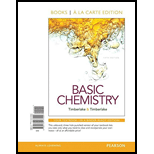
Concept explainers
(a)
Interpretation:
To identify the disaccharide that fits best in the given description.
Used in brewing
Concept Introduction:
A disaccharide is a type of sugar which is made up of two monosaccharides units that are joined together by a linkage known as glycosidic linkage. Glycosidic linkage is formed as a result of linkage of -OH group on carbon number 1 of one monosaccharide with the hydroxyl group present on the carbon number 4 of other molecule of monosaccharide. The two monosaccharides forming disaccharide molecule can be same or different depending upon the disaccharide to be formed.
(c)
Interpretation:
To identify the disaccharide that fits best in the given description.
Composed of two glucose units
Concept Introduction:
A disaccharide is a type of sugar which is made up of two monosaccharides units that are joined together by a linkage known as glycosidic linkage. Glycosidic linkage is formed as a result of linkage of -OH group on carbon number 1 of one monosaccharide with the hydroxyl group present on the carbon number 4 of other molecule of monosaccharide. The two monosaccharides forming disaccharide molecule can be same or different depending upon the disaccharide to be formed.
(b)
Interpretation:
To identify the disaccharide that fits best in the given description.
Also called milk sugar
Concept Introduction:
A disaccharide is a type of sugar which is made up of two monosaccharides units that are joined together by a linkage known as glycosidic linkage. Glycosidic linkage is formed as a result of linkage of -OH group on carbon number 1 of one monosaccharide with the hydroxyl group present on the carbon number 4 of other molecule of monosaccharide. The two monosaccharides forming disaccharide molecule can be same or different depending upon the disaccharide to be formed.
(d)
Interpretation:
To identify the disaccharide that fits best in the given description.
Contains glucose and fructose
Concept Introduction:
A disaccharide is a type of sugar which is made up of two monosaccharides units that are joined together by a linkage known as glycosidic linkage. Glycosidic linkage is formed as a result of linkage of -OH group on carbon number 1 of one monosaccharide with the hydroxyl group present on the carbon number 4 of other molecule of monosaccharide. The two monosaccharides forming disaccharide molecule can be same or different depending upon the disaccharide to be formed.
Want to see the full answer?
Check out a sample textbook solution
Chapter 18 Solutions
Basic Chemistry, Books a la Carte Edition (5th Edition)
 ChemistryChemistryISBN:9781305957404Author:Steven S. Zumdahl, Susan A. Zumdahl, Donald J. DeCostePublisher:Cengage Learning
ChemistryChemistryISBN:9781305957404Author:Steven S. Zumdahl, Susan A. Zumdahl, Donald J. DeCostePublisher:Cengage Learning ChemistryChemistryISBN:9781259911156Author:Raymond Chang Dr., Jason Overby ProfessorPublisher:McGraw-Hill Education
ChemistryChemistryISBN:9781259911156Author:Raymond Chang Dr., Jason Overby ProfessorPublisher:McGraw-Hill Education Principles of Instrumental AnalysisChemistryISBN:9781305577213Author:Douglas A. Skoog, F. James Holler, Stanley R. CrouchPublisher:Cengage Learning
Principles of Instrumental AnalysisChemistryISBN:9781305577213Author:Douglas A. Skoog, F. James Holler, Stanley R. CrouchPublisher:Cengage Learning Organic ChemistryChemistryISBN:9780078021558Author:Janice Gorzynski Smith Dr.Publisher:McGraw-Hill Education
Organic ChemistryChemistryISBN:9780078021558Author:Janice Gorzynski Smith Dr.Publisher:McGraw-Hill Education Chemistry: Principles and ReactionsChemistryISBN:9781305079373Author:William L. Masterton, Cecile N. HurleyPublisher:Cengage Learning
Chemistry: Principles and ReactionsChemistryISBN:9781305079373Author:William L. Masterton, Cecile N. HurleyPublisher:Cengage Learning Elementary Principles of Chemical Processes, Bind...ChemistryISBN:9781118431221Author:Richard M. Felder, Ronald W. Rousseau, Lisa G. BullardPublisher:WILEY
Elementary Principles of Chemical Processes, Bind...ChemistryISBN:9781118431221Author:Richard M. Felder, Ronald W. Rousseau, Lisa G. BullardPublisher:WILEY





